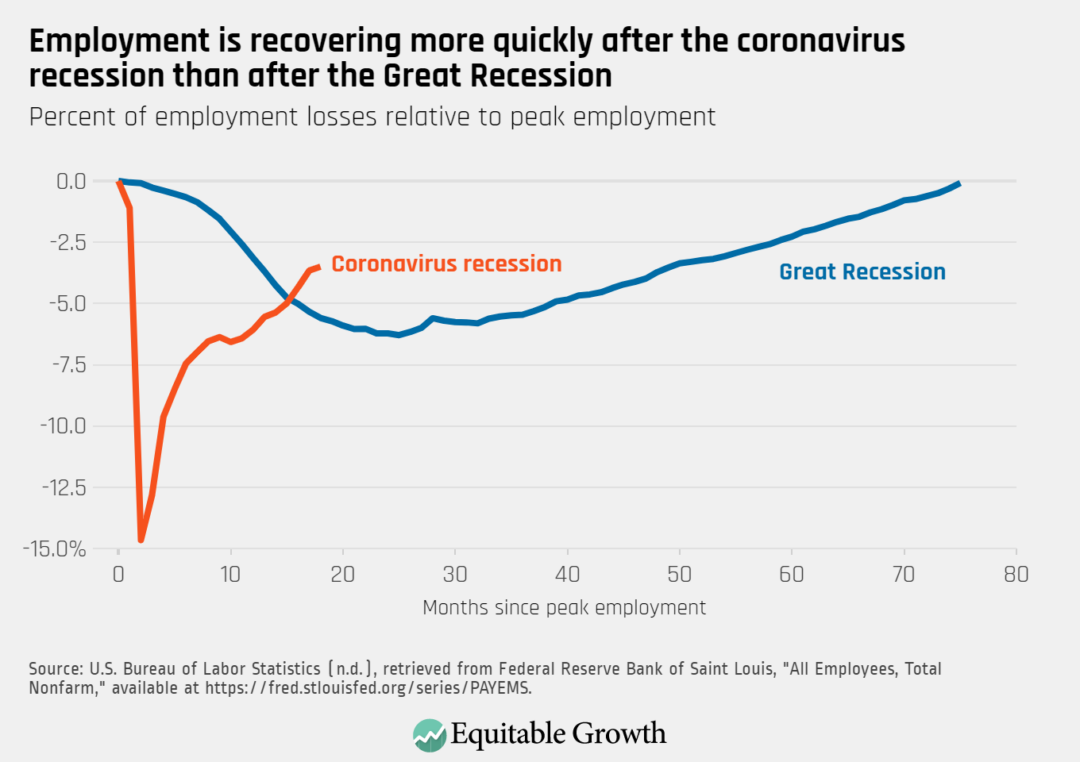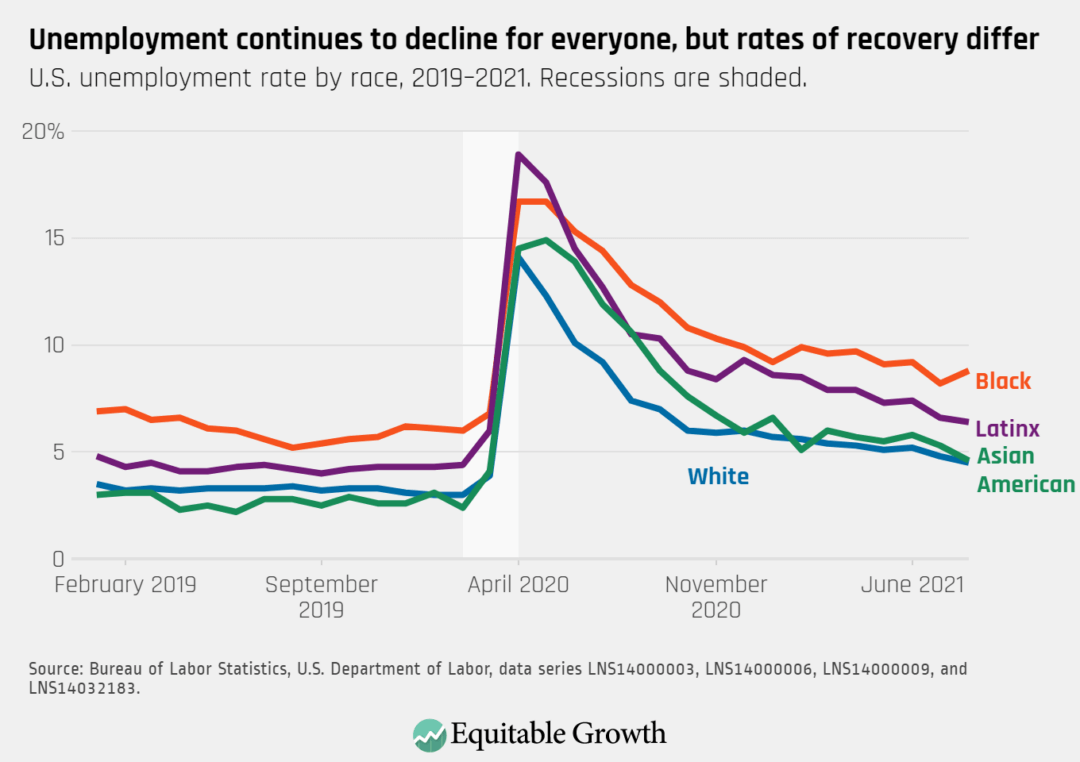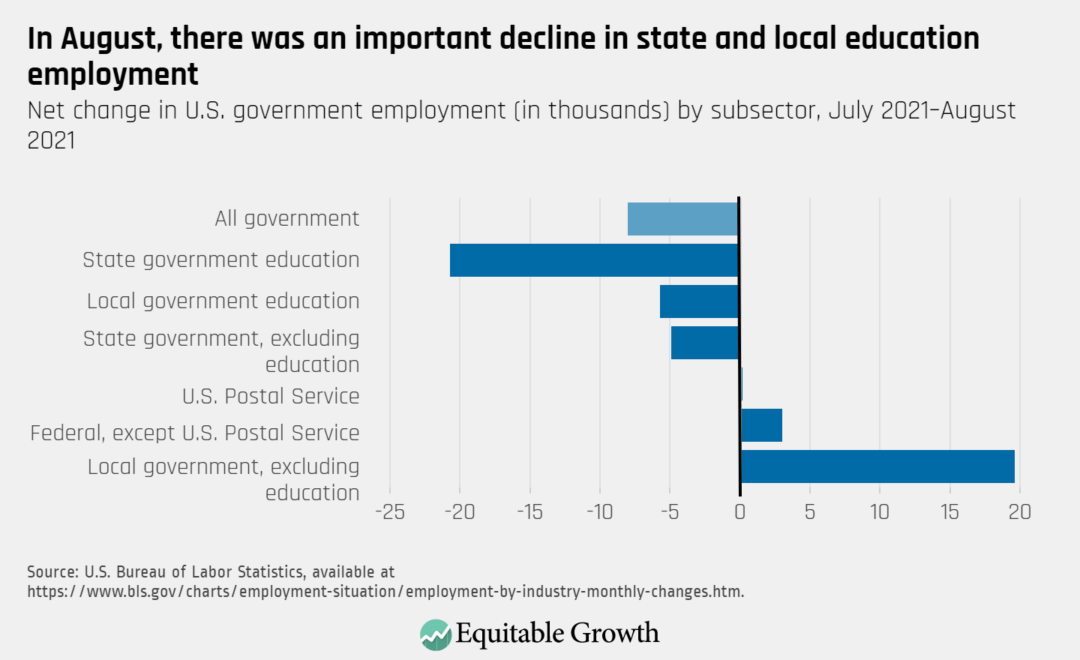August Jobs Report: Uncertainty and teacher shortages loom over the new school year

There was a telling slowdown in the recovery of U.S. jobs in August, according to the most recent Employment Situation Release by the U.S. Bureau of Labor Statistics today. Amid climbing COVID-19 infections in many states, the U.S. economy added only 235,000 jobs between mid-July and mid-August—significantly less than expected and well below the 876,000 average job gains over the previous 3 months.
The overall U.S. labor force participation rate was unchanged from July to August, remaining at 61.7 percent after little improvement over the past year. The prime-age employment-to-population ratio—a measure that captures the share of adults ages 25 to 54 who are employed—did show an increase, rising from 77.8 percent in July to 78 percent in August, though it is still 2.4 percentage points below its pre-pandemic level in February 2020.
Despite this slowing pace of jobs recovery this past month, the bounce back in employment remains far speedier after the coronavirus recession than after the Great Recession of 2007–2009. (See Figure 1.)
Figure 1

Disaggregating the most recent jobs numbers by race and ethnicity provides a more complete picture of the current jobs recovery. The unemployment rate for Black workers—which continues to be higher than for any other major racial or demographic group—rose from 8.2 percent in July to 8.8 percent in August and is 2.8 percentage points above its pre-pandemic level. Latinx workers are experiencing an unemployment rate of 6.4 percent, 2 points above its pre-pandemic level. The unemployment rate for Asian American workers in August fell to 4.6 percent and for White workers fell to 4.5 percent, compared to July rates of 5.3 percent and 4.8 percent, respectively, and pre-pandemic lows of 2.4 percent and 3 percent in February 2020. (See Figure 2.)
Figure 2

Recent trends in employment growth reversed in August. Across sectors, the leisure and hospitality industry and the government sector experienced the biggest net increases in employment over the 3 months from May to June, adding 1.1 million jobs and 438,000 jobs, respectively, but leisure and hospitality experienced no growth and government employment actually declined by 8,000 in August. For the government sector, there was a 26,400 decline in state and local education jobs—a decline that was partially offset by local government hiring, excluding education. (See Figure 3.)
Figure 3

A snapshot of public education employment patterns before and amid the pandemic
Even before the decline in public education (local and state education are down 406,000 jobs and private education is down 159,000 jobs since February 2020, though private education added 40,000 jobs in August), school districts across the country reported facing a teacher shortage as they head into a new academic year. They also are struggling with COVID-19 outbreaks, shifting public health guidelines, and contentious debates over both mask and vaccine mandates.
For school teachers, the continuing coronavirus makes an already-demanding job even more stressful. A recent survey by the RAND Corporation, for example, finds that in pre-pandemic years, on average, 1 in 6 teachers reported that they were likely to leave their job by the end of the school cycle. But in the 2020–2021 school year, almost 1 in 4 teachers said they were likely to leave their jobs. And another report found that 44 percent of the public school teachers who voluntarily stopped teaching after March 2020 did so because of the pandemic.
Clearly, fears of getting or spreading COVID-19 and the challenges of navigating an unprecedented teaching environment added on to the tough working conditions that teachers were struggling with well before the health and economic crises hit the United States in February of last year. Indeed, over the past 10 years, demand for teachers has been greater than supply, leading to a growing teacher shortage that has only been exacerbated by pandemic-related hiring slowdowns, layoffs, and resignations.
Relatively low pay, stress at work, and lack of administrative support are some of the main reasons why schools have long struggled to hire and retain teachers. Research by Sylvia Allegretto at the University of California, Berkeley and Larry Mishel at the Economic Policy Institute finds, for instance, that in 1996, public school teachers were paid 6 percent less than other workers with similar levels of education and years of work experience, among other characteristics associated with productivity, yet by 2019, this pay penalty had grown to 20 percent.
Insufficient compensation hurts the workers who do the job, their students, and the public school system writ-large. Low pay increases moonlighting, where teachers have to work a second job to make ends meet, which further limits education quality that can be provided by teachers stretched too thin. Similarly, research shows that teacher quality is affected by their low wages in the presence of outside options. Put another way, would-be high-quality teachers may choose other professions if there are better opportunities elsewhere.
The race and gender costs and consequences of inadequate public education pay
As in-person schooling remains contentious and risky, combined with these preexisting trends, the teacher shortage crisis continues to pose a risk to education quality across the United States. One study shows, for example, that the most qualified teachers—those who are fully certified, have more years of experience, and have a background in the subject they are teaching—are less likely to work in high-poverty schools. Labor conditions, teacher preparation, and public funding are all closely intertwined, which is one reason why progressive funding for education has the potential to reduce economic inequality.
Because teaching remains a heavily women-dominated profession and women continue to do the lion’s share of the unpaid work of caring for their families and communities, the added pressure the coronavirus crisis has put on women workers limits potential job gains after women led job growth in recent months following steep losses earlier in the pandemic. The teacher workforce is predominately made up of White women, and the pandemic could exacerbate existing pressures that drive Black teachers out of the profession.
Indeed, according to the RAND report, “nearly half of teachers who identified as Black or African American reported that they were likely to leave their jobs by the end of the school year and were more likely to say that they planned to leave than were teachers of other races.” Across industries, Black and Latinx women have seen the highest job losses during the pandemic and have been most likely to leave the U.S. labor force entirely.
Officially, the economic recession triggered by the coronavirus pandemic only lasted 2 months, between February and April of last year. Yet millions of workers and families continue to struggle. The U.S. economy is currently at a 5.3 million job deficit, compared with February 2020, and more than 8.4 million people looking for a job do not have one.
Moreover, the huge strides in the jobs recovery will be moderated by the degree to which high-quality jobs, especially jobs that do not put workers at risk in a pandemic, are available to workers, and by the number of workers willing and able to return to front-line jobs amid the recent sharp spike in infections. Then, there’s the degree to which families are supported in managing the continued threat of coronavirus through policies such as accessible child care and Unemployment Insurance benefits.
Across all of these jobs market dynamics, one pattern is clear: The pandemic is highlighting the role worker voice can play in keeping students, workers, and communities safe. Even as teacher unions have not uniformly supported vaccine mandates, 90 percent of the National Education Association’s members—the largest teacher union in the country—are vaccinated. A team of researchers studying how unions influence the adoption of public health guidance found that Iowa school districts where a greater share of teachers were unionized were more likely to adopt mask mandates last year. Schools that required teachers and staff to wear masks, the authors note, had 37 percent fewer COVID-19 cases than schools that did not implement the mandates.
Teachers have gone to massive lengths to both teach during the pandemic and ensure schools are safe, yet they are often not supported in the same way if they are exposed to the coronavirus at work. Last year, teachers—along with other eligible workers—could receive up to 2 weeks of emergency paid sick leave through the Families First Coronavirus Response Act. But employers were only required to provide these benefits until the provision expired at the end of 2020, and few school districts made the decision to extend this leave until March 2021 or access the renewed, voluntary round of federally funded leave that is currently set to expire at the end of September. As a result, in some districts, teachers have to use their own sick leave if instructed to quarantine by their schools.
To ensure all primary and secondary schools can eventually reopen and the labor market recovery gets back on track, all public school teachers and other school staff need to be able to access the supports and economic security needed to navigate the ongoing pandemic.






